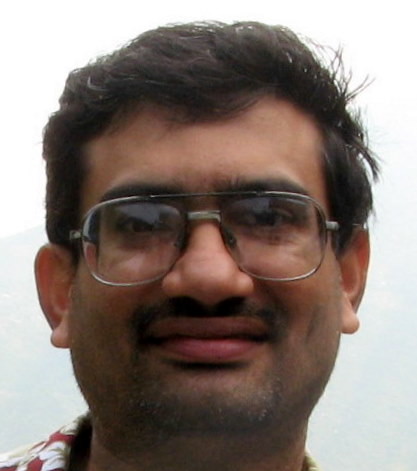 A few nights ago, we attended a program in a very different format. It was called a Pecha Kucha Night (PKN). I hadn’t known of its existence until I saw a poster for it in Mumbai’s JnanaPravaha.
A few nights ago, we attended a program in a very different format. It was called a Pecha Kucha Night (PKN). I hadn’t known of its existence until I saw a poster for it in Mumbai’s JnanaPravaha.Pecha-Kucha originated in 2003 in Dytham-Klein, an architecture firm in Tokyo. It is now run in over 200 cities. The goal is to provide a forum for architects, artists, photographers and even academics to showcase their work and ideas in a rapid-fire mode. The format mentioned in the poster is what caught my eye – people had to present 20 slides with 20-seconds-per-slide.
We went not knowing what to expect. The auditorium was absolutely packed, with people standing at the back and also sitting on the floor. The Mumbai version had a big architecture focus -- 5 of the 8 presentation related to architecture. The other presentations that night were by an aspiring musician/singer, and one by an artist-videographer and one with ideas for more effective management & leadership.
The creativity of the presenters was very impressive. The first presentation was about lighting the entryway to the Paddington Station in London, on how many factors go into making sure that there is a smooth transition of lighting from outside to inside. The next presentation was a very rapid survey of “Mud architecture” – featuring a few very impressive constructions in Mali and Yemen.
One entire presentation was in the form of movie characters speaking through cartoon bubbles – illustrating the idiosyncrasies of people who build a house presented from an architect’s point of view.
One person used his 20 slides in a presentation titled “7 Colors” in which he proposed several principles to make Management in general more effective.
An architecture professor bemoaned the state of their discipline, using data, humor and sarcasm in his 20 slides titled “A2F.” An architecture student presented a call to action from his fellow students by presenting work that he had done in South Africa. His 20 slides hinged on the premise that one person can make a difference.
I particularly liked the fact that in this format all 20 (PowerPoint) slides were set to auto-transition after 20 seconds each. Once the SlideShow started, this ensured that in 400 seconds, the entire show would get over. There was no going back to elaborate on any slide. Some participants struggled to keep up, but the time limit forced them to keep going. (I now wish that more of my work/business presentations had this sort of a time control imposed on them. We have all attended too many conferences where the earlier presenters consume way more than their allotted time, belaboring points.)
Overall, I was very impressed Pecha Kucha –in terms of the scope and breadth of its content, and especially the format. I will make it a point to see if I can catch Pecha Kucha Nights in other cities.
To find one near you, check out Pecha-Kucha.org.



 Ram
Ram






